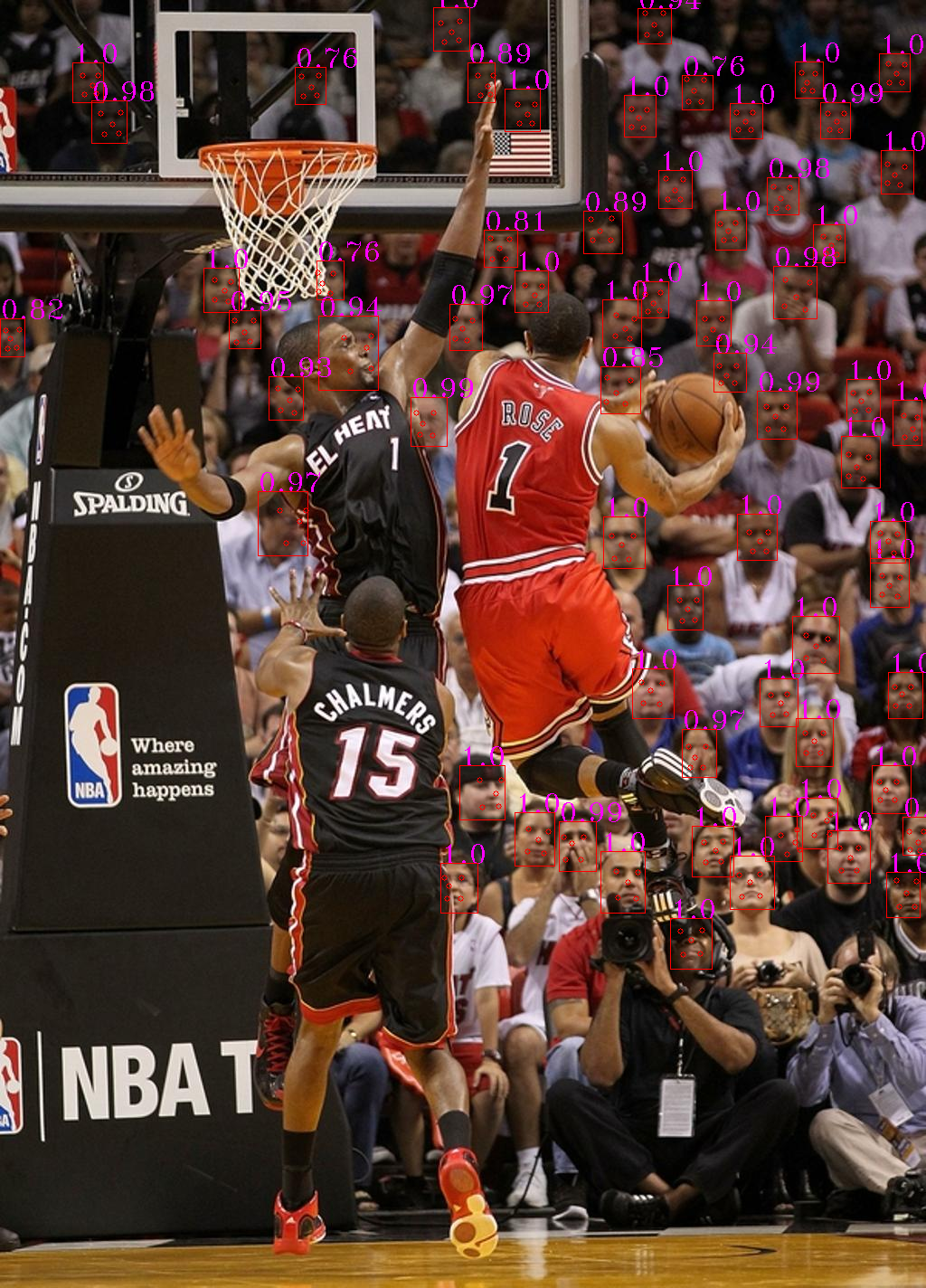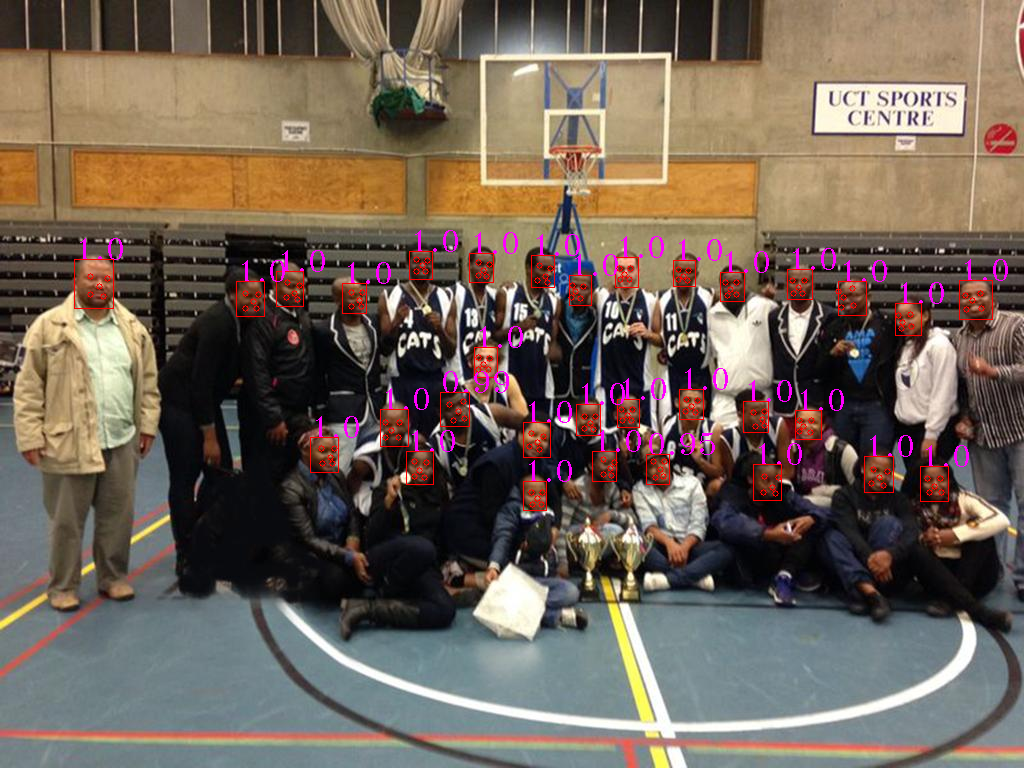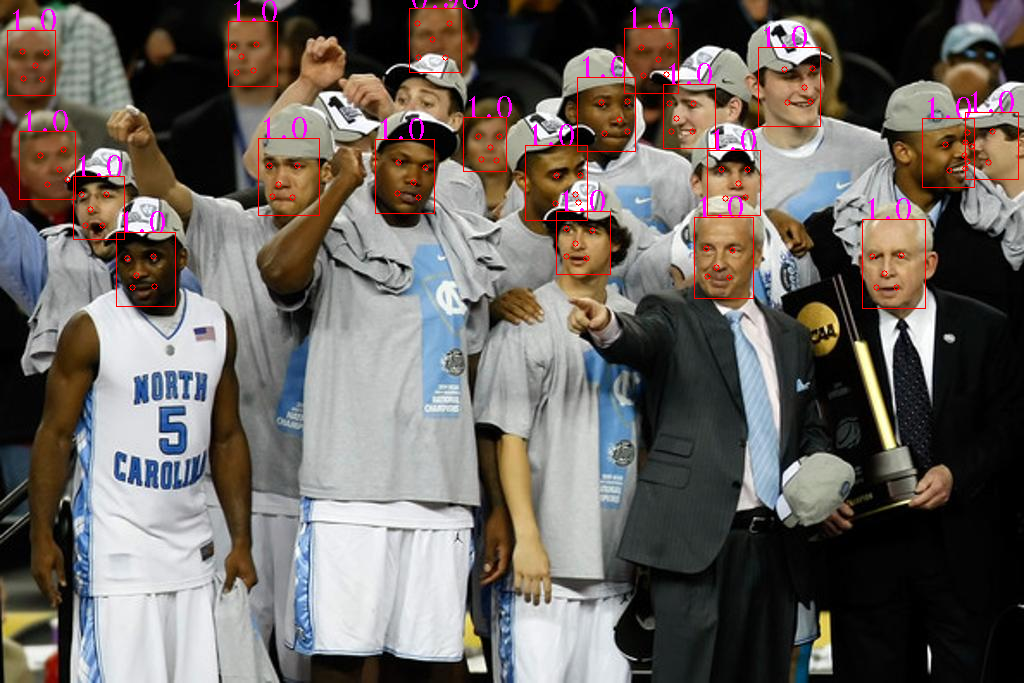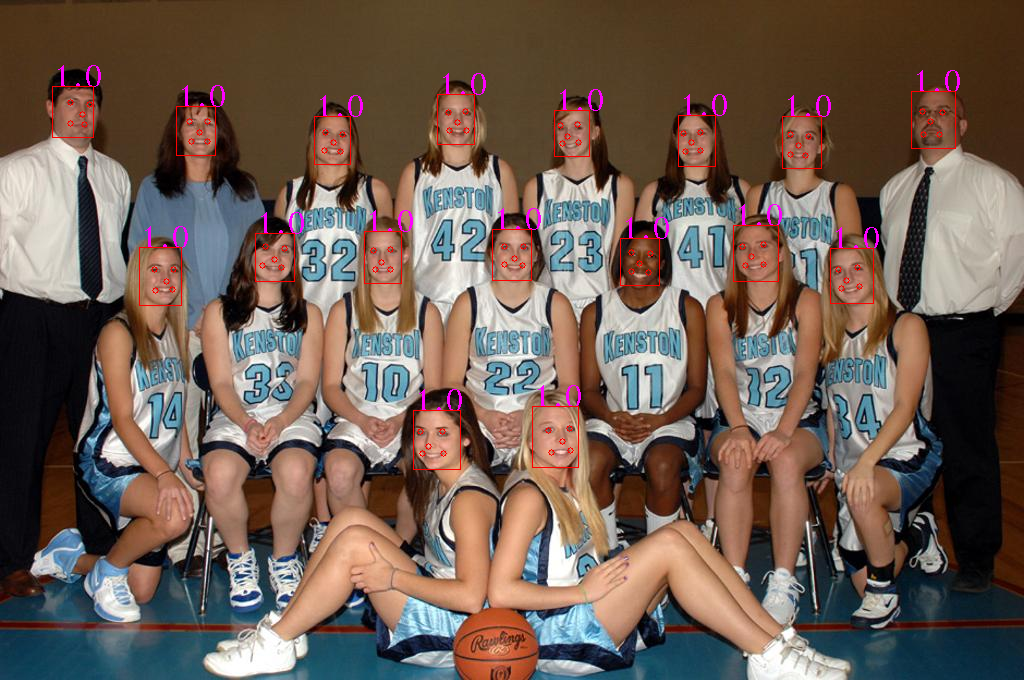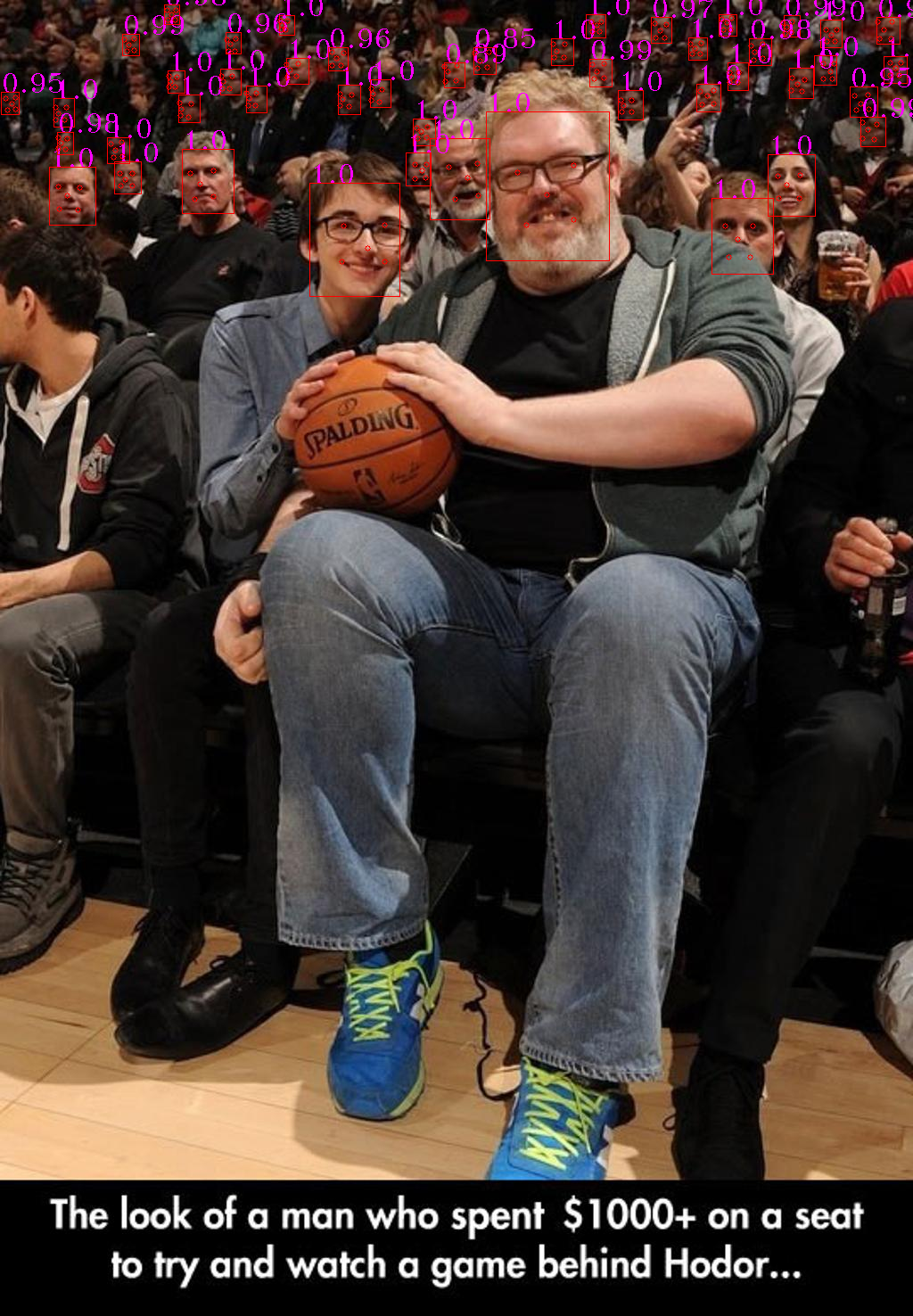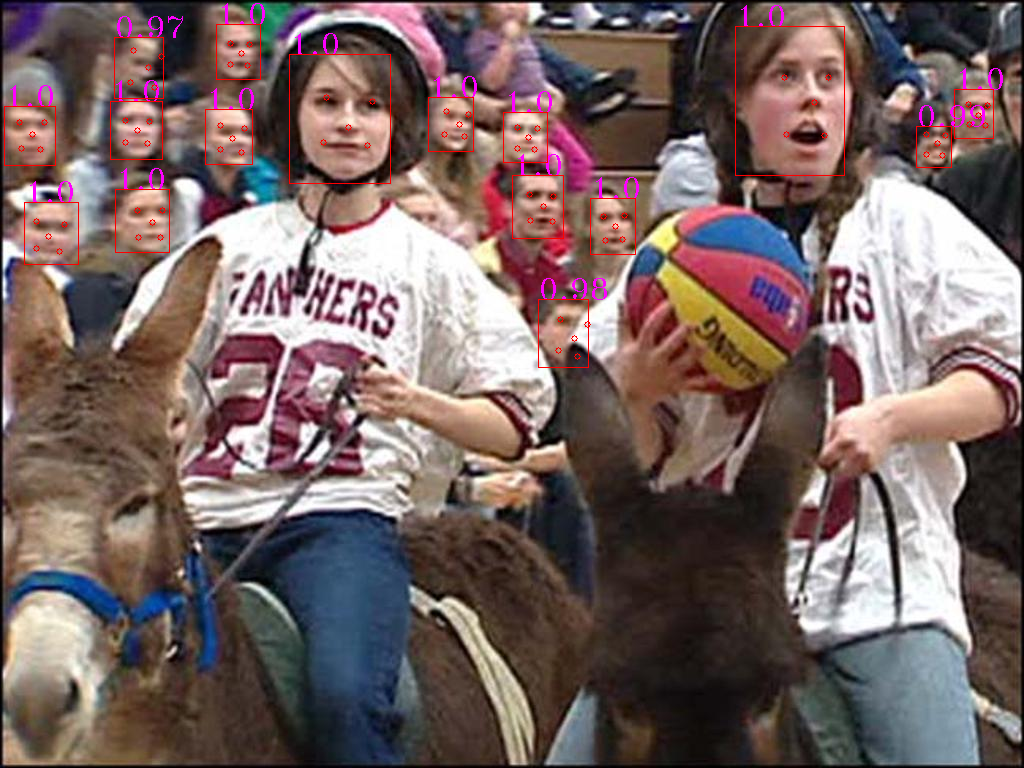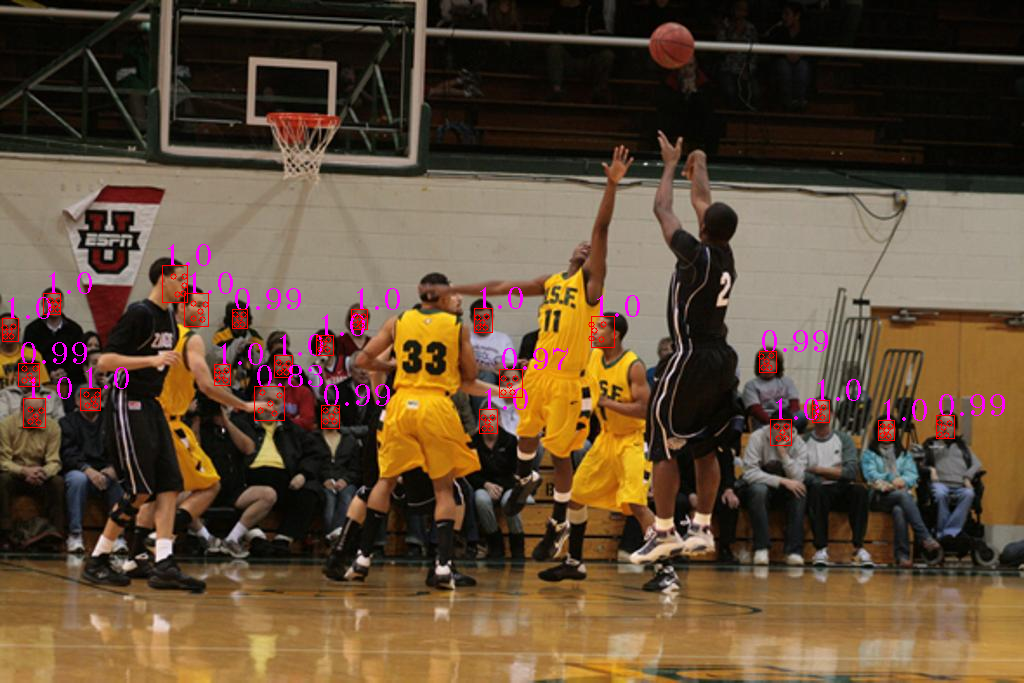This work is used for reproduce MTCNN,a Joint Face Detection and Alignment using Multi-task Cascaded Convolutional Networks.
- You need CUDA-compatible GPUs to train the model.
- You should first download WIDER Face and Celeba.WIDER Face for face detection and Celeba for landmark detection(This is required by original paper.But I found some labels were wrong in Celeba. So I use this dataset for landmark detection).
- Install the python dependences
pip3 install -r requirements.txt.
- Download Wider Face Training part only from Official Website , unzip to replace
WIDER_trainand put it intoprepare_datafolder. - Download landmark training data from here,unzip and put them into
prepare_datafolder. - Run
sh prepare_pnet_data.shto generate training data for PNet. - Run
sh train_pnet.shto train PNet. - Run
sh prepare_rnet_data.shto generate training data for RNet. - Run
sh train_rnet.shto train RNet. - Run
sh prepare_onet_data.shto generate training data for ONet. - Run
sh train_onet.shto train ONet.
Run MTCNN detector on the video.
cd test/
python3 camera_test.py
-
When training PNet,I merge four parts of data(pos,part,landmark,neg) into one tfrecord,since their total number radio is almost 1:1:1:3.But when training RNet and ONet,I generate four tfrecords,since their total number is not balanced.During training,I read 64 samples from pos,part and landmark tfrecord and read 192 samples from neg tfrecord to construct mini-batch.
-
It's important for PNet and RNet to keep high recall radio.When using well-trained PNet to generate training data for RNet,I can get 14w+ pos samples.When using well-trained RNet to generate training data for ONet,I can get 19w+ pos samples.
-
Since MTCNN is a Multi-task Network,we should pay attention to the format of training data.The format is:
[path to image][cls_label][bbox_label][landmark_label]
For pos sample,cls_label=1,bbox_label(calculate),landmark_label=[0,0,0,0,0,0,0,0,0,0].
For part sample,cls_label=-1,bbox_label(calculate),landmark_label=[0,0,0,0,0,0,0,0,0,0].
For landmark sample,cls_label=-2,bbox_label=[0,0,0,0],landmark_label(calculate).
For neg sample,cls_label=0,bbox_label=[0,0,0,0],landmark_label=[0,0,0,0,0,0,0,0,0,0].
-
Since the training data for landmark is less.I use transform,random rotate and random flip to conduct data augment(the result of landmark detection is not that good).
MIT LICENSE
- Kaipeng Zhang, Zhanpeng Zhang, Zhifeng Li, Yu Qiao , " Joint Face Detection and Alignment using Multi-task Cascaded Convolutional Networks," IEEE Signal Processing Letter
- MTCNN-MXNET
- MTCNN-CAFFE
- deep-landmark
